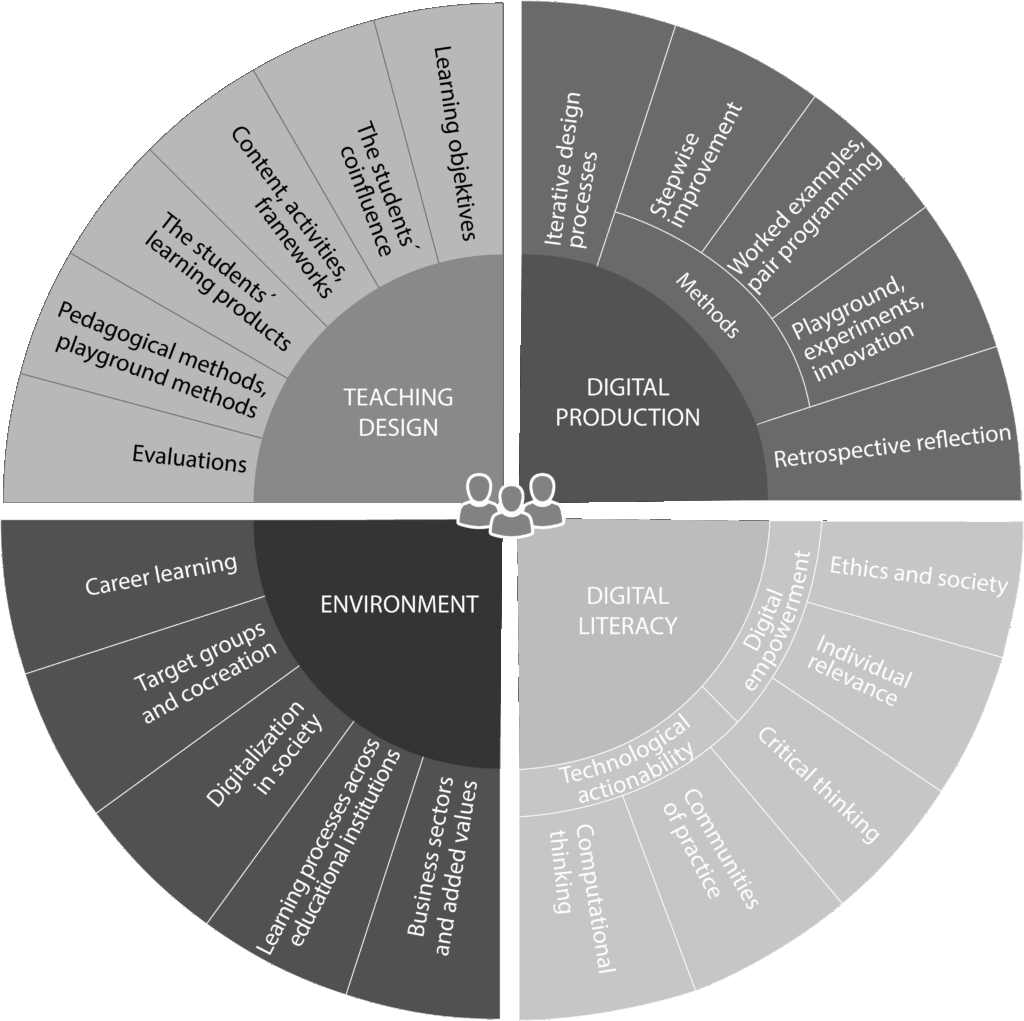2025: From ´ROBOdidactics´ to ´DigiDidactics´
The ROBOdidactics model was developed, tested, and reviewed across various educational organizations and levels during a series of projects in Southern Denmark (2018–2022).
In parallel and in the following years, the model was applied to teaching contexts requiring specific tech-didactics, while further research was conducted.
Meanwhile, new themes emerged, making it increasingly urgent to integrate these aspects. First and foremost, the need to think and act sustainably—also in relation to digital technologies—became more pressing. Additionally, globalization and the growing demand for engaging with new technologies in cross-border collaborations gained importance.
Finally, ROBOdidactics required a thorough review from fresh perspectives, as the model was quite complex, with a relatively steep learning curve for newcomers to tech-didactics.

For now, the guideline still refers to ROBOdidactics. A new guideline will be developed at the end of 2025 or the beginning of 2026. However, since the essence of DigiDidactics largely aligns with its predecessor, the topical explanations and guiding questions remain rather applicable until then.
DigiDidactics (Nov. 2024)
The DigiDidactics model shares the same mission as the ROBOdidactics model:
– To raise awareness among teachers and managers about the different dimensions of teaching with digital production and to provide inspiration within each of these dimensions.
– To support teachers and managers across subjects, educational levels, sectors, and country borders in communicating about their teaching.
– To facilitate evaluations and peer feedback to identify areas for further development.
Crucial principles
The DigiDidactics model, like its predecessor ROBOdidactics, is designed as a generic framework. It is non-normative and context-independent.
This means that the DigiDidactics model aims to complement local didactic models without overriding or bypassing them.
Finally, DigiDidactics follows a “pick-and-play” approach. Users can start anywhere within the model and select any elements that fit a given teaching module. There are no fixed rules or prescribed sequences to follow.
MYRE DK-DE has received financial support from PKP | Interreg Deutschland – Danmark.
In addition to the 35% co-financing, the three project partners have contributed significant own resources and engaged a wide range of network partners.




